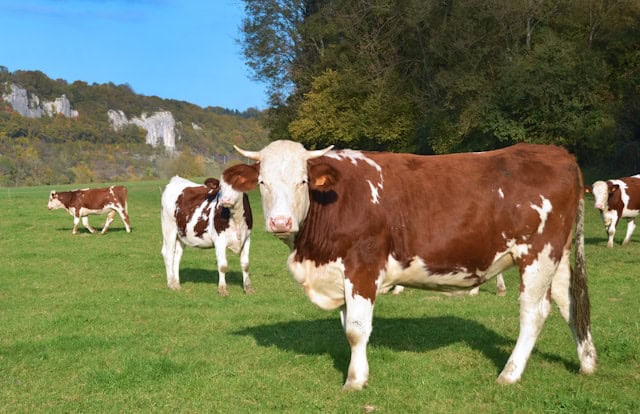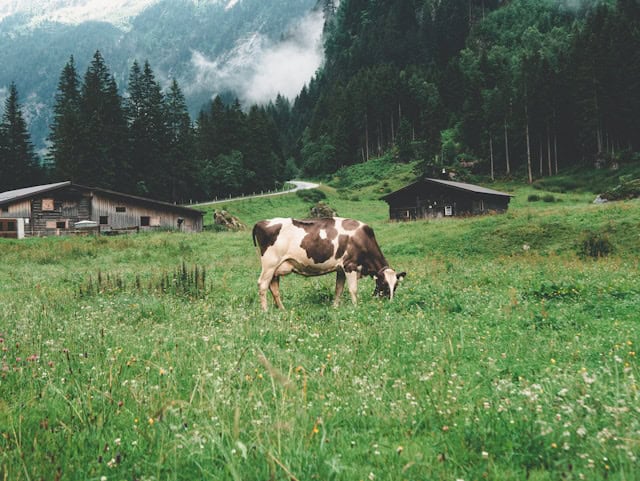Carbon emissions, particularly carbon dioxide (CO2), are considered the most critical factor contributing to climate change, leading to a rise in global temperatures due to its innate property of trapping heat in the Earth’s atmosphere. Furthermore, the drivers of massive CO2 concentrations include mainly human activities, such as the burning of fossil fuels (coal, oil, and natural gas) for energy in various industries. To link this matter to the subject we’re discussing today, we should all remind ourselves how poorly managed livestock can degrade soil and vegetation, ultimately reducing the land’s sequestration capacity.
You may wonder now how an ordinary animal, such as a cow, could ever be an effective solution for carbon capture. No one would ever think of cows when assessing solutions to global warming. And yes, at first glance, it feels like someone would advise you to take a nausea pill when your head hurts. However, these two, cows and carbon capture, although seemingly worlds apart, are connected in some way. We’re not saying cows themselves sequester carbon; it’s all about managed grazing practices, which typically involve a proactive approach to controlling livestock density and grazing duration. Cows, in fact, emit methane, which, if produced in high levels, can significantly reduce the amount of oxygen breathed from the air.

You must be very intrigued already, so let’s solve the mystery.
Carbon Sequestration Explained Straightforwardly
In simple terms, carbon sequestration refers to the process of capturing and storing carbon dioxide from the atmosphere. While this process is highly approached through human-engineered technologies, such as Direct Air Capture (DAC) and Bioenergy with Carbon Capture and Storage (BECCS), there are other options as well. These include biological carbon sequestration, which essentially involves using vegetation (such as grasslands, forests, soils, and oceans) to store carbon dioxide, and geological carbon sequestration, where carbon dioxide is stored in underground geologic formations, including saline aquifers, depleted oil and gas reservoirs, and unmineable coal seams.
To remember: Carbon sequestration is not a standalone solution. It must be part of a broader strategy that includes reducing carbon emissions.
Until now, you shouldn’t have that many inquiries, except for one, which may be huge: Where do cows come in when it comes to capturing and storing carbon dioxide?
The Role Of Cows In Helping Store Carbon In The Soil
Let’s picture the following scenario: Munching on grass and foraging in a pasture, a herd of cows moves instinctively. While they graze, they also trim the grass, enough to strengthen its root system and encourage growth. Throughout their trip on the land, their hooves become more than just hooves, pressing organic stuff such as leaves and manure into the soil. They form small spaces that allow water and air to seep in. Here, the process of photosynthesis steps in, allowing the grass to capture carbon dioxide from the atmosphere while storing it underground. From that moment on, the carbon captured into the soil becomes ingrained in a layer teeming with fungi and microbes. Just like that, the carbon is locked into the soil, offering tremendous potential to surpass emissions.
Other ways in which cows can contribute to soil carbon storage include cow manure (the not-so-sweet part about cows, excrements), which acts as a natural fertilizer, enhancing soil health and fertility. Ultimately, it allows for greater carbon storage. So, yes, cows for carbon capture seem a pretty effective solution, one that is organic as well, contributing to the relentless efforts of the conscious segment of society, which do not approach environmental issues carelessly. In a way, everybody cares about sustainability now, whether we are talking about ordinary individuals who demonstrate it through buying their favorite latte from places with eco-friendly cups, or prominent CEOs who actively utilize the services of responsible balers and waste compactors, such as those from Mil-tek.

Other Carbon-Smart Farming Practices
In addition to grazing, which undoubtedly plays a fundamental role in carbon sequestration, the equation is much broader, with countless other sustainable practices emerging every day. Here’s a breakdown of these practices:
- Agroforestry: Adding trees and shrubs to farmland can help substantially reduce emissions, storing carbon in both the soil and the trees.
- Crop rotation: Increasing plant and microorganism diversity helps improve soil health overall, better retaining carbon stored.
- No-till farming: When crops are planted without tilling the soil, it is only natural that the soil is less disturbed. For this reason, no-till farming promotes the buildup of soil organic carbon, which is key for a natural carbon sink.
- Regenerative grazing: This practice involves rotating livestock through smaller, fenced areas, encouraging more extended recovery periods for the land. Furthermore, when the land is finally restored, vegetation also flourishes, enhancing the soil’s capacity to store carbon.
The Chances Of Agriculture To Become Carbon-Negative – To Be Or Not To Be?
Although not your first morning thought, many can’t help but wonder whether we’ll ever attain a future where agriculture is popular for its capacity to remove CO2 from the atmosphere rather than for its culpability in emissions. Research data suggests that by 2050, this goal has a substantial chance of being attained, with the massive adoption of eco-friendly practices and innovative solutions in farming, including methane-reducing feed additives and precision agriculture.
According to the IPCC, agriculture accounts for almost 22% of the overall GHG emissions. Still, it remains entirely valid that this industry has the potential not only to reduce its emissions but also to store emissions from other sectors. Thus, the most fundamental players in the fight against climate change are farmers. They must take action, but before moving to the facts, they must acknowledge the significant role their practices play in greenhouse gas emissions. Participating in research trials and working with agricultural extension can be a viable option for remaining informed about the latest scientific findings and best practices for reducing emissions.
There’s only one barrier: the costs. It’s indeed true that farmers can face financial challenges when transitioning to eco-friendly practices, particularly in the past. The upfront investment in new equipment, infrastructure, and labor may outweigh the goodwill of many, although long-term benefits, such as increased yields and reduced costs, are anticipated. Factors influencing the financial impact include the type of practice, farm size and scale, access to financing, market conditions, and government policies.
